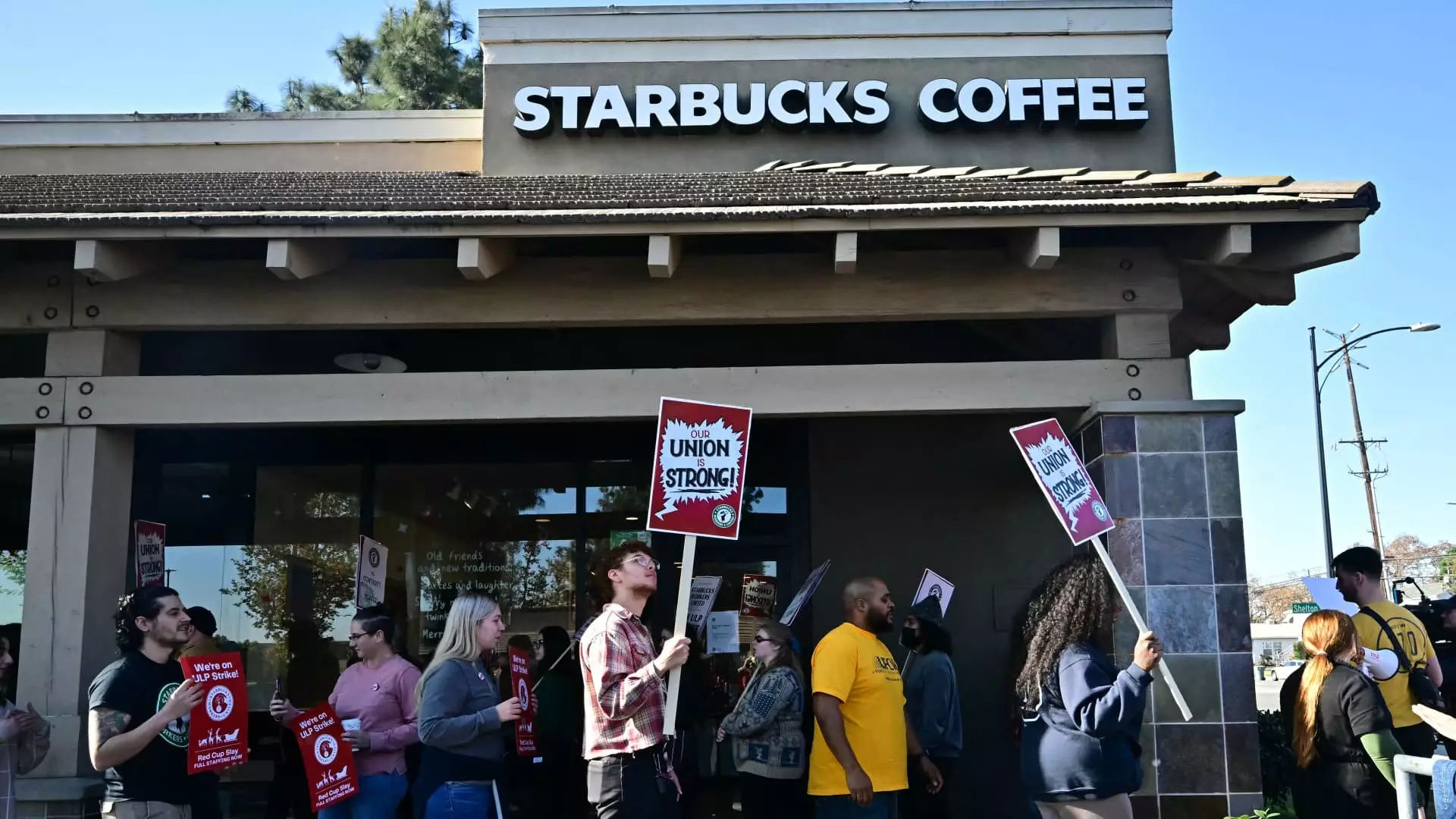The landscape of labor relations at Starbucks is experiencing significant upheaval as a growing strike involves approximately 5,000 workers across more than 300 locations in 45 states. While this number represents only about 3% of all Starbucks locations in the U.S., the expansion of the strike following initial actions in a few cities signifies a mounting discontent among employees. This heightened activism comes at a crucial time as the company enters its busy holiday season, a period typically associated with increased consumer spending and company profits.
Union Organizing and Worker Demands
The strike is primarily organized by the Service Employees International Union (SEIU) and the grassroots group Starbucks Workers United, both of which are advocating for substantial changes in workplace conditions. The crux of the workers’ demands revolves around a significant wage increase; they seek an immediate 64% hike in Starbucks’ minimum hourly wage and a staggering 77% increase over the three-year life of a contract. These demands reflect a broader call for what workers perceive to be fair compensation for the escalating cost of living and their essential role in the company’s success.
Lynne Fox, the president of the Workers Union, articulated the sentiments of many striking workers by emphasizing their worth. In her statement, she criticized Starbucks for failing to align its rhetoric of valuing employees, referred to as “partners,” with tangible wage increases. This disparity has fueled feelings of resentment and amplified the likelihood of sustained labor actions.
In response to the strike, a memo from Starbucks executives characterized union demands as “not sustainable.” This disconnect between corporate leadership and the workforce encapsulates a fundamental challenge in labor relations; while the company highlights its comprehensive benefits package—where employees averaging 20 hours a week can earn about $30 an hour when factoring in pay and benefits—employees are increasingly skeptical. Starbucks Executive Vice President Sara Kelly noted the union abruptly walked away from bargaining talks, a statement that attempts to shift responsibility back to the union for the stalled negotiations.
The strike occurs amid fluctuating investor sentiment following the hiring of Brian Niccol, the former CEO of Chipotle, to lead Starbucks. Although there was initial optimism in the market regarding Niccol’s potential, the company’s stock has faced downward pressure in recent weeks, mirroring broader market trends. Niccol’s intent to engage with the union in good faith, alongside his storied history of labor negotiations—including settlements mandated by the National Labor Relations Board—will be closely watched as part of future bargaining efforts.
Ultimately, this unfolding strike at Starbucks is reflective of a wider surge in labor activism across various sectors. The employees’ resolve to advocate for their rights will be pivotal not only in shaping their immediate workplace conditions but may also have lasting implications for the labor movement in the retail and service industries at large. As the negotiations proceed, the interactions between management and workers will serve as a litmus test for the company’s values and commitment to truly involving its workforce as partners in the business.


Leave a Reply